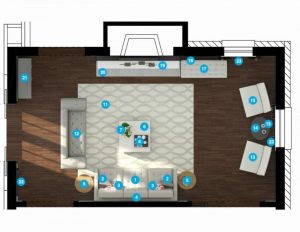ALINA Residences

ALINA Residences is currently under construction on more than 8 acres on Southeast Mizner Boulevard in Downtown Boca Raton. This luxury development is one of Palm Beach County’s latest new construction projects in South County. The development will include a nine-story building with 121 condos, 102 of which will be fully furnished and 12 will be penthouses. The units will range from one to four bedrooms ranging in size from 1400 to more than 4,800 square feet overlooking the Boca Raton Golf Club. Alina will include seven villas with lanais and private gardens.
ALINA, designed by Garcia Stromberg and developed by El-Ad National Properties, will feature more than 32,000 square feet of residents-only outdoor amenities, a club room, fitness center, sauna, steam room, rooftop pool deck with cabanas and bike storage. ALINA’s landscaped outdoor promenades connect to the heart of Boca Raton, where Royal Palm Place, Mizner Park, al fresco dining, upscale galleries, and couture boutiques are all just a stroll away. Surrounded by nature in a peaceful resort atmosphere, ALINA is quietly tucked away in historic downtown Boca Raton, yet so close to a world of conveniences. Envelop yourself in the energy of downtown living, the captivating greenscape of the Boca Raton Resort and Club golf course, and the beauty of nearby beaches and fresh ocean breezes. This rich environment provides an abundance of options for active lifestyles and the opportunity for outdoor fitness and recreation.
View Residences for Sale in ALINA below. Call Kim Bregman at 561-251-7170 for a private showing.
Sorry we are experiencing system issues. Please try again.

















 Kim N. Bregman
Kim N. Bregman